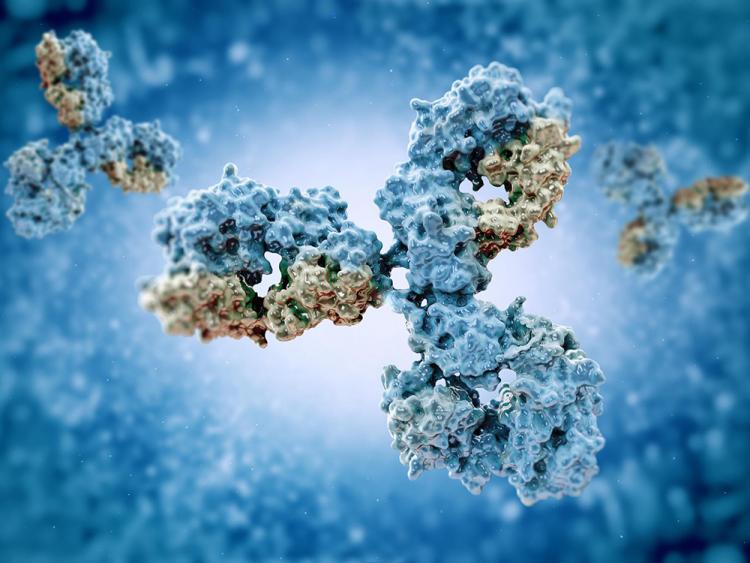Antibody Engineering Saves Lives

Computational biology, which analyzes multiple DNA segments using computational tools from the field of big data, allows Dr. Gur Yaari to search for treatments for diseases such as celiac, hepatitis type C, multiple sclerosis, and cancer.
One of Dr. Gur Yaari’s main projects in his lab at the Faculty of Engineering of Bar Ilan University focuses on the attempt to find a cure for celiac. Yet you may wonder about the connection between engineering and celiac. “The information revolution has reached the field of biology, and immunology in particular, allowing us to read the genetic code of white blood cells in the human body,” says Dr. Yaari. “White blood cells produce proteins called antibodies. We have about one hundred billion of these cells in our body, and each cell produces slightly different antibodies. Up to seven years ago, we could read sequences of five antibodies in one experiment, while today we can read sequences of millions of antibodies at once. This has advanced research from the domain of biological analysis to that of big data analysis. This is what brought me to the Faculty of Engineering: Here I develop methods and mathematical tools for analysis of big data of various diseases”.
Dr. Yaari, married and father of three children, has a BSc in Mathematics and Physics, an MSc in Physics of High Energy, and a PhD in Physics of Complex Systems. His transition to computational biology and antibody engineering occurred during his post-doctoral studies in Yale University. “During my graduate studies, I was involved in the world of models. I devoted my PhD studies to physics, in the field of solid states, during which I examined how large populations grow and act in the presence of uncontrollable factors, such as the weather. These models were inspired by physics, and were implemented mainly in the disciplines of biology, economy and ecology”, he says. “During my post-doctoral studies I wanted to work on a somewhat more relevant and meaningful subject, and I arrived at Yale during the early stages of what is today termed ‘next generation sequencing’. I found myself dealing with down-to-earth subjects that were relevant to health and to our understanding of biological systems, and have a strong impact on our lives, and suddenly I was enthusiastic about what I was doing. The models that I currently analyze really make a difference to people”.
Dr. Yaari joined the Faculty of Engineering at Bar Ilan University three years ago, and established a Molecular Biology lab, which is half ‘dry’, i.e., computational, and half ‘wet’ - experimental, to study the immune system. One of his main projects involves the study of celiac disease: “Celiac is an autoimmune disease, in which white blood cells attack the body itself due to exposure to gluten. In collaboration with a group in Oslo University, we try to understand why such a response occurs in some people and not in others”, he explains. “We know, for example, that in celiac patients, white cells of type B act against two main proteins, gluten and gliadin. In one of our ongoing studies, we take samples from the blood and intestine of celiac patients immediately upon diagnosis of the disease, sort the B cells that we find based on the protein to which they ultimately attach, and try to analyze which elements in these proteins cause the body to begin attacking itself. We also examine these patients over time, after six months and one year, and try to detect their memory B cells, which can persist in the human body for years, and analyze their characteristics. If we achieve this, we may be able to produce a treatment that can target these cells and help these patients. In another study, we took millions of cells from 50 celiac patients and 50 healthy subjects, and we are now trying to examine whether there are common features between all celiac patients that do not exist in healthy individuals, and whether such features can be characterized even before the vulnerable individuals develop disease symptoms.”
Dr. Yaari is also involved in another major project that deals with hepatitis C. “In this project, conducted in collaboration with the Faculty of Medicine in Zefat, we are studying approximately 40 individuals infected with the disease, part of which are chronic patients, and part of which have recovered without any treatment. We are trying to isolate the parts of the antibodies in the group that recovered from the disease. If and when we succeed, we can produce these antibodies in the lab, and hopefully utilize them as a treatment for this disease.” Additional research in Dr. Yaari’s lab involves multiple sclerosis, HIV, leukemia, and flu vaccination. “Over the past several years, there has been a dramatic leap in the field of computational biology of the immune system, termed antibody engineering. This has occurred as a result of the combination of technology - which allows us to sequence numerous portions of DNA at low cost - with algorithms, big data analysis and computational tools that enable the handling of such large amounts of data, and reaching biological conclusions”, says Dr. Yaari. “Over 50% of the new drugs approved for use by the FDA are based on antibodies. Thus, this field has very weighty economic and clinical implications. Every advance, even the smallest one, can lead to development of drugs and vaccines for a large variety of diseases. For me, it will be enough to elucidate, even to some extent, our understanding of one of the diseases I am studying, and of course open the door for students, who will then be able to promote this field in ways I cannot even dream of”.
Last Updated Date : 06/09/2017



